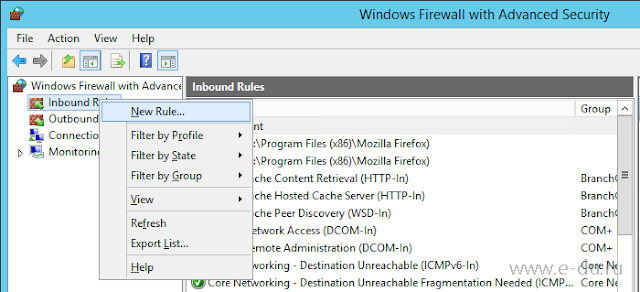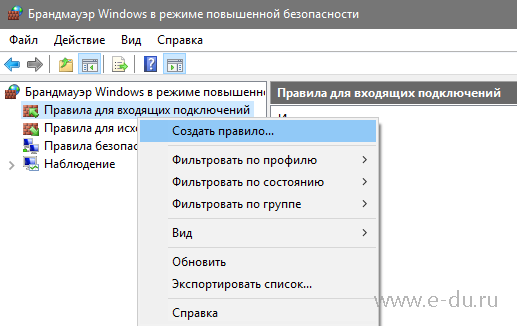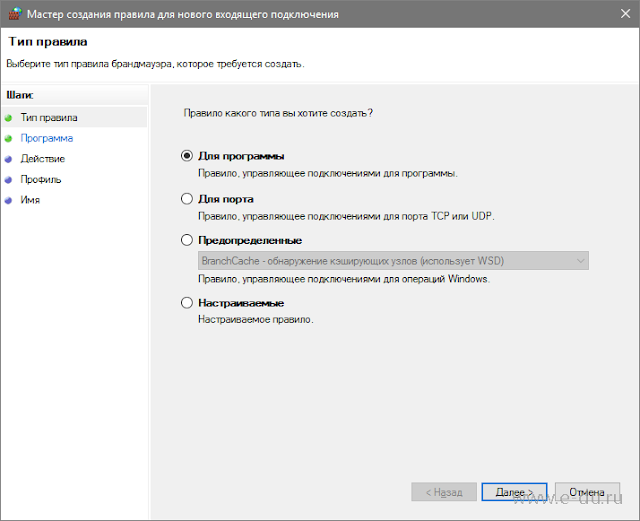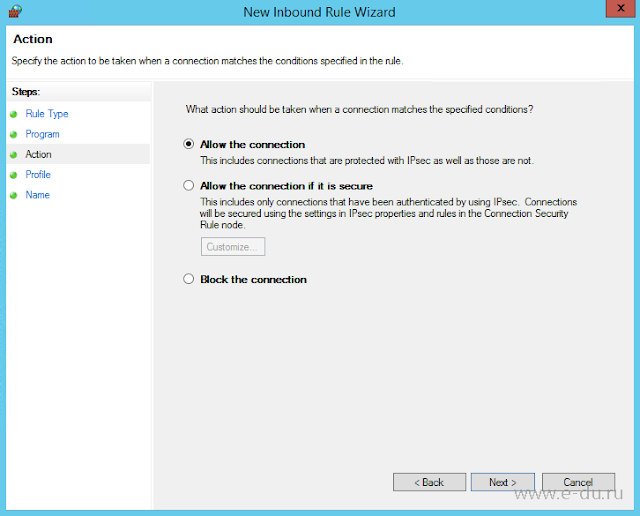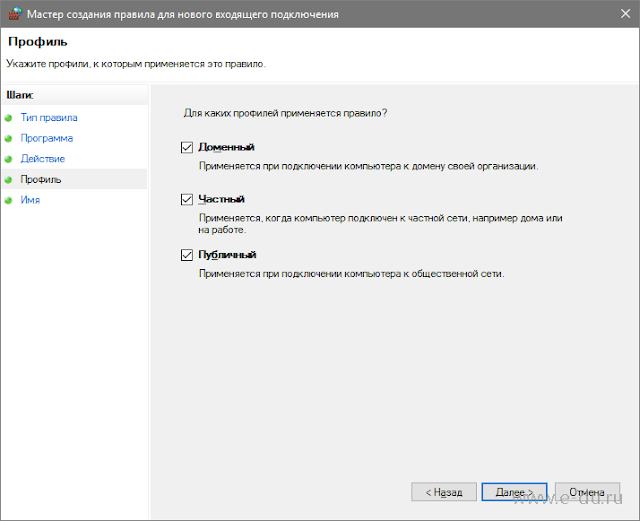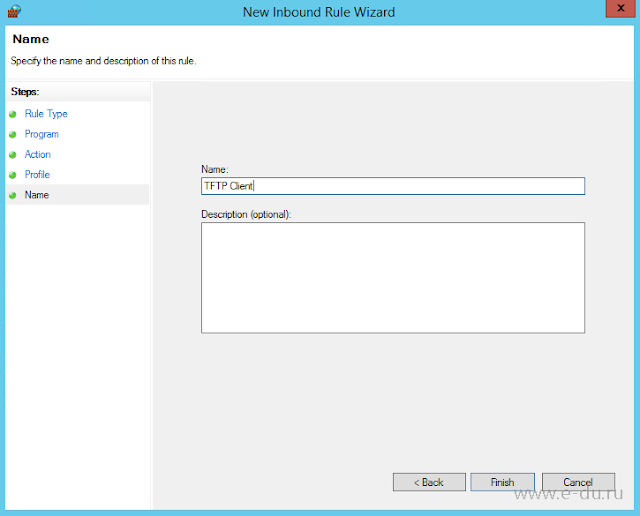#1
Bill52
-
- Members
- 1 posts
-
Australia
Posted 11 May 2007 — 08:53 PM
Hi there,
PXE network boot:
When the client connects, the message window appears but the bootfile is not transfered.
IP is allocated OK.
I receive the above error message (in the log window).
What can I do about it?
I can’t see what am I doing wrong.
Thanks,
Bill
- Back to top
#2
Ph. Jounin
Ph. Jounin
-
-
Developer
-
- 54 posts
Member
- Location:Lyon (France)
Posted 14 May 2007 — 09:24 PM
The acknowlegde of block 0 is sent by the client when the server uses specific options. Thus, you should have a trouble in the settings.
You can try to check/uncheck Option negotiation. You may also try PXE compatibilty.
- Back to top
#3
Computer Angel
Computer Angel
-
- Members
-
- 14 posts
Newbie
-
Pakistan
Posted 03 October 2008 — 08:11 PM
hi i am having the same problem. i am trying to boot windows 98 cd image through tftp.. my logs are the followings:
Using local port 3893 [03/10 14:04:36.890]
OACK: <tsize=797149248,blksize=1440,> [03/10 14:04:36.890]
Using local port 3894 [03/10 14:04:36.906]
TIMEOUT waiting for Ack block #0 [03/10 14:04:41.734]
TIMEOUT waiting for Ack block #0 [03/10 14:04:41.750]
TIMEOUT waiting for Ack block #0 [03/10 14:04:45.609]
TIMEOUT waiting for Ack block #0 [03/10 14:04:45.625]
TIMEOUT waiting for Ack block #0 [03/10 14:04:51.890]
TIMEOUT waiting for Ack block #0 [03/10 14:04:51.906]
TIMEOUT waiting for Ack block #460527 [03/10 14:07:54.234]
after this my laptop resets! can anyone guide me y this is happening?
- Back to top
#4
AcmeUK
AcmeUK
-
- Members
- 1 posts
-
United Kingdom
Posted 27 October 2008 — 11:55 PM
PXE network boot:
When the client connects, the message window appears but the bootfile is not transfered.
IP is allocated OK.
I receive the above error message (in the log window).
Hi
I had the same problem. I found out here http://blog.webpirates.co.uk/?p=56 that the PC you want to boot MUST be on the same subnet as your TFTP server.
My server was on 192.168.1.xx, I had set up the Tftp32 DHCP to the 10.1.1.xx range and got the timeout error. Changing the DHCP addresses to the 192.168.1.xx range sorted the problem for me.
Hope this helps
BillP
- Back to top
#1
Bill52
-
- Members
- 1 posts
-
Australia
Posted 11 May 2007 — 08:53 PM
Hi there,
PXE network boot:
When the client connects, the message window appears but the bootfile is not transfered.
IP is allocated OK.
I receive the above error message (in the log window).
What can I do about it?
I can’t see what am I doing wrong.
Thanks,
Bill
- Back to top
#2
Ph. Jounin
Ph. Jounin
-
-
Developer
-
- 54 posts
Member
- Location:Lyon (France)
Posted 14 May 2007 — 09:24 PM
The acknowlegde of block 0 is sent by the client when the server uses specific options. Thus, you should have a trouble in the settings.
You can try to check/uncheck Option negotiation. You may also try PXE compatibilty.
- Back to top
#3
Computer Angel
Computer Angel
-
- Members
-
- 14 posts
Newbie
-
Pakistan
Posted 03 October 2008 — 08:11 PM
hi i am having the same problem. i am trying to boot windows 98 cd image through tftp.. my logs are the followings:
Using local port 3893 [03/10 14:04:36.890]
OACK: <tsize=797149248,blksize=1440,> [03/10 14:04:36.890]
Using local port 3894 [03/10 14:04:36.906]
TIMEOUT waiting for Ack block #0 [03/10 14:04:41.734]
TIMEOUT waiting for Ack block #0 [03/10 14:04:41.750]
TIMEOUT waiting for Ack block #0 [03/10 14:04:45.609]
TIMEOUT waiting for Ack block #0 [03/10 14:04:45.625]
TIMEOUT waiting for Ack block #0 [03/10 14:04:51.890]
TIMEOUT waiting for Ack block #0 [03/10 14:04:51.906]
TIMEOUT waiting for Ack block #460527 [03/10 14:07:54.234]
after this my laptop resets! can anyone guide me y this is happening?
- Back to top
#4
AcmeUK
AcmeUK
-
- Members
- 1 posts
-
United Kingdom
Posted 27 October 2008 — 11:55 PM
PXE network boot:
When the client connects, the message window appears but the bootfile is not transfered.
IP is allocated OK.
I receive the above error message (in the log window).
Hi
I had the same problem. I found out here http://blog.webpirates.co.uk/?p=56 that the PC you want to boot MUST be on the same subnet as your TFTP server.
My server was on 192.168.1.xx, I had set up the Tftp32 DHCP to the 10.1.1.xx range and got the timeout error. Changing the DHCP addresses to the 192.168.1.xx range sorted the problem for me.
Hope this helps
BillP
- Back to top
Модераторы: GRooVE, alexco
Правила форума
Убедительная просьба юзать теги [code] при оформлении листингов.
Сообщения не оформленные должным образом имеют все шансы быть незамеченными.
-
doker
- сержант
- Сообщения: 207
- Зарегистрирован: 2008-11-18 16:20:26
ошибка в работе tftp
день добрый, столкнулся с проблмой, настраиваю встроенный в FreeBSD 7.2 tftp сервер
inetd.conf
Код: Выделить всё
tftp dgram udp wait root /usr/libexec/tftpd tftpd -l -s /var/tftpboot -u user_back
Код: Выделить всё
# netstat -a | grep tftp
udp4 0 0 *.tftp *.*
при скачке все волшебно, но при заливке
Код: Выделить всё
# tftp 10.10.10.10
tftp> put dovecot-1.1.11.tar.gz
Error code 3: Disk full or allocation exceeded
Sent 9216 bytes in 5.0 seconds
xferlog
Код: Выделить всё
tftpd[65420]: Filename: 'dovecot-1.1.11.tar.gz'
tftpd[65420]: Mode: 'netascii'
tftpd[65420]: 10.10.10.10: write request for dovecot-1.1.11.tar.gz: error 102
tftpd[65418]: Timeout #0 on DATA block 1
tftpd[65418]: write_file returned 0
tftpd[65420]: Timeout #0 on DATA block 1
tftpd[65420]: Timeout #1 on DATA block 1
tftpd[65420]: Timeout #2 on DATA block 1
tftpd[65420]: Timeout #3 on DATA block 1
tftpd[65420]: Timeout #4 on DATA block 1
tftpd[65420]: Timeout #5 on DATA block 1, giving up
пермишены
Код: Выделить всё
# cd /var
# ls -all | grep tftpboot
drwx---rwx 2 user_back user_back 512 12 ноя 17:34 tftpboot
места на диске вагон
Код: Выделить всё
# df -h
Filesystem Size Used Avail Capacity Mounted on
/dev/ad0s1a 135G 82G 42G 66% /
devfs 1.0K 1.0K 0B 100% /dev
есть у кого какие мысли ?
гугль непомог
-
Хостинг HostFood.ru
Услуги хостинговой компании Host-Food.ru
Хостинг HostFood.ru
Тарифы на хостинг в России, от 12 рублей: https://www.host-food.ru/tariffs/hosting/
Тарифы на виртуальные сервера (VPS/VDS/KVM) в РФ, от 189 руб.: https://www.host-food.ru/tariffs/virtualny-server-vps/
Выделенные сервера, Россия, Москва, от 2000 рублей (HP Proliant G5, Intel Xeon E5430 (2.66GHz, Quad-Core, 12Mb), 8Gb RAM, 2x300Gb SAS HDD, P400i, 512Mb, BBU):
https://www.host-food.ru/tariffs/vydelennyi-server-ds/
Недорогие домены в популярных зонах: https://www.host-food.ru/domains/
-
doker
- сержант
- Сообщения: 207
- Зарегистрирован: 2008-11-18 16:20:26
Re: ошибка в работе tftp
Непрочитанное сообщение
doker » 2009-11-13 11:46:41
pol писал(а):Эм …
Код: Выделить всё
touch /var/tftpboot/dovecot-1.1.11.tar.gz chmod 666 /var/tftpboot/dovecot-1.1.11.tar.gz?
под user_back создаеться без проблем
Код: Выделить всё
$ touch /var/tftpboot/dovecot-1.1.11.tar.gz
$ chmod 666 /var/tftpboot/dovecot-1.1.11.tar.gz
$ ls -all | grep dovecot
-rw-rw-rw- 1 user_back user_back 0 Nov 13 11:52 dovecot-1.1.11.tar.gz
-
doker
- сержант
- Сообщения: 207
- Зарегистрирован: 2008-11-18 16:20:26
Re: ошибка в работе tftp
Непрочитанное сообщение
doker » 2009-11-13 11:51:21
BirdGovorun писал(а):Похоже проблема с правами на папку, куда заливаешь.
какие ?, стоят 707
-
pol
- проходил мимо
Re: ошибка в работе tftp
Непрочитанное сообщение
pol » 2009-11-13 11:59:06
Я подумал о:
man tftpd
-w Allow write requests to create new files. By default tftpd
requires that the file specified in a write request exist. Note
that this only works in directories writable by the user speci-
fied with -u option
-
doker
- сержант
- Сообщения: 207
- Зарегистрирован: 2008-11-18 16:20:26
Re: ошибка в работе tftp
Непрочитанное сообщение
doker » 2009-11-13 12:03:02
pol писал(а):Я подумал о:
man tftpd
-w Allow write requests to create new files. By default tftpd
requires that the file specified in a write request exist. Note
that this only works in directories writable by the user speci-
fied with -u option
в точку ))))
огромное спасибо
Решение и попытка TFTPD32 не может передавать данные
Предыстория: однажды, чтобы провести эксперимент с топологией GNS3, вам нужно передать файл конфигурации GNS3 на локальный компьютер, поэтому я загрузил TFTPD32. Краткая диаграмма топологии выглядит следующим образом. После настройки его можно пропинговать, но нельзя передать. Это почти сбивает с толку. Такого рода судебное разбирательство длилось 3 часа … действительно глупо (вручную смешно)
Первый способ ошибки: добавить системный TFTP
В случае PING было неизбежно думать, что это проблема TFTP, и я начал думать, что это проблема системы. Я использовал систему GHOST, но я чувствовал, что она оптимизирована. Порт 69 был заблокирован. Через функцию программы панели управления — —Добавить программу WINDOS — TFTP-клиент.
Не работает …
Глупо думать об этом сейчас, как я хочу передавать данные из GNS3 на локальную, это тоже сторона сервера, открытие клиента — это позор!
Вторая попытка ошибки: проблема с программой TFTPD32.
Сделав неправильную попытку, я почувствовал, что завис и проблема с системой решена (Привет!) Поэтому я начал задаваться вопросом, есть ли проблема с настройкой TFTPD32, и я запустил Baidu для поиска правильной настройки TFTPD32, потому что мой был на английском языке, и Зеленого нет, значит, вначале был бардак … Сначала возьмите переводную картинку
Это моя собственная фотография
Не работает …
Неправильная третья попытка — N
Размышляя об этом, можно выделить разные:
1. Очевидно, что PING подключен, но я думаю, что есть проблема с этим адресом класса B, можно ли его изменить на класс C … (крупные компании не используют серию TFTP)
2. Перезагрузите компьютер, он будет работать? Перезагрузите GNS3, перезапустите TFTPD32 (тройное управление сетью)
3. Будет ли 360 заблокирован? Закройте его!
А, 360?
Вот и волшебный поворот
Правильная попытка первая:
Подумав о том, блокирует ли 360 информацию, я наконец вспомнил, что в WINDOS есть брандмауэр, который всегда будет игнорироваться …
Это оно!(Что я делал раньше )
Думаю, я могу написать статью «О необходимости отсутствия системного межсетевого экрана》。
Правильная попытка вторая:
Существование разумно, так что лучше найти способ обойти это. Довольно неприятно отключать подсказку в правом нижнем углу.
TFTP — это передача с небольшой пропускной способностью, поэтому это UDP.
Следующий шаг …
Здесь его можно отключить.
Это конец эксперимента, и я оплакиваю одну секунду IQ. OTL …
I am trying to netboot a PC with no CD Drive and no USB Booting options (Available in BIOS but does not recognise USB, broken perhaps somehow).
Anyhow here is the log from TFTP32:
Rcvd DHCP Discover Msg for IP 0.0.0.0, Mac 00:1F:D0:8D:8B:09 [06/12 13:06:48.916]
DHCP: proposed address 192.168.2.1 [06/12 13:06:48.917]
Rcvd DHCP Rqst Msg for IP 0.0.0.0, Mac 00:1F:D0:8D:8B:09 [06/12 13:06:51.113]
Previously allocated address 192.168.2.1 acked [06/12 13:06:51.113]
Connection received from 192.168.2.1 on port 2070 [06/12 13:06:51.125]
Read request for file <netbootpxelinux.0>. Mode octet [06/12 13:06:51.126]
Using local port 53708 [06/12 13:06:51.127]
Connection received from 192.168.2.1 on port 2071 [06/12 13:06:53.125]
Read request for file <netbootpxelinux.0>. Mode octet [06/12 13:06:53.126]
Using local port 53709 [06/12 13:06:53.127]
Connection received from 192.168.2.1 on port 2072 [06/12 13:06:57.136]
Read request for file <netbootpxelinux.0>. Mode octet [06/12 13:06:57.137]
Using local port 53710 [06/12 13:06:57.137]
Connection received from 192.168.2.1 on port 2073 [06/12 13:07:03.122]
Read request for file <netbootpxelinux.0>. Mode octet [06/12 13:07:03.123]
Using local port 53711 [06/12 13:07:03.124]
TIMEOUT waiting for Ack block #1 [06/12 13:07:06.129]
TIMEOUT waiting for Ack block #1 [06/12 13:07:08.129]
Connection received from 192.168.2.1 on port 2074 [06/12 13:07:11.086]
Read request for file <netbootpxelinux.0>. Mode octet [06/12 13:07:11.087]
Using local port 53717 [06/12 13:07:11.088]
TIMEOUT waiting for Ack block #1 [06/12 13:07:12.139]
TIMEOUT waiting for Ack block #1 [06/12 13:07:18.126]
TIMEOUT waiting for Ack block #1 [06/12 13:07:26.090]
Also when I ping the computer I get:
Pinging 192.168.2.1 with 32 bytes of data:
Reply from 10.20.21.188: Destination net unreachable.
Reply from 10.20.21.188: Destination net unreachable.
Reply from 10.20.21.188: Destination net unreachable.
Reply from 10.20.21.188: Destination net unreachable.
Ping statistics for 192.168.2.1:
Packets: Sent = 4, Received = 4, Lost = 0 (0% loss),
PS C:Windowssystem32>
If anyone has any ideas as to how I might go about rectifying this it would be most appreciated.
Regards
EDIT_>
Additional information that might be useful
-
I am not using a crossover cable; however, the network card on my server computer is a gigabit one, I’m not sure if that means I still need a crossover cable, however. The two PCs are connected by only a fast Ethernet switch.
-
The final objective of the netboot is to install Debian on the client computer. I am currently running an Apache server but I haven’t yet ascertained what the next steps will be. I am booting pxelinux.0 (not really sure yet what it actually is, I got it from the Debian tar.gz file I downloaded from the net following the guide here).
It looks like the tcpdump output contains only requests and not any responses at all. If this is what is actually happening, then a timeout error is to be expected.
In the server_args line of your TFTP configuration for xinetd, you have -u tftp. That tells in.tftpd to run as user tftp. In light of that, this message logged by in.tftpd might be important:
Jan 15 13:13:21 tools in.tftpd[7955]: no user tftp: Success
It says «no user tftp». Does the tftp user account actually exist on your system?
The Success at the end of the log message requires a bit of C programming knowledge to understand. It is likely to come from a minimalist error-handling function that probably just calls perror() and then does any necessary clean-up before exiting.
The perror() function takes a message from its caller and then appends to it a standard error message corresponding to the current value of the errno variable. It is designed to be used in situations where a previous system call has failed; the custom message should describe what the program was doing when the error was encountered, and the standard message should then clarify the type of problem encountered.
But if the programmer has used their error-handling function to report an error that has been caught some other way, the standard error message part will read Success.
My guess is that the in.tftpd process gets started by xinetd, prepares to switch to user tftp, and finds out that such user does not exist. So the in.tftpd process outputs that log message and dies without sending anything to the client.
The terse message with a misleading «Success» at the end is an example of the old concept of «if your only tool is a hammer, you tend to treat everything as nails.» In this case, the programmer has probably used their only error handling function in a situation to which its output format does not quite fit.
Also, these requests look a little odd:
12:34:33.477401 IP 172.16.1.202.ah-esp-encap > tools.dmz.tuxme.dk.tftp: 27 RRQ "pxelinux.0" octet tsize 0
12:34:35.481131 IP 172.16.1.202.acp-port > tools.dmz.tuxme.dk.tftp: 27 RRQ "pxelinux.0" octet tsize 0
12:34:39.490793 IP 172.16.1.202.msync > tools.dmz.tuxme.dk.tftp: 27 RRQ "pxelinux.0" octet tsize 0
12:34:45.477712 IP 172.16.1.202.gxs-data-port > tools.dmz.tuxme.dk.tftp: 27 RRQ "pxelinux.0" octet tsize 0
12:34:53.441801 IP 172.16.1.202.vrtl-vmf-sa > tools.dmz.tuxme.dk.tftp: 27 RRQ "pxelinux.0" octet tsize 0
The tsize 0 indicates the client is expecting a TFTP transfer with a file size of 0 bytes total.
Are you aware that the UEFI PXE specification, as it existed in UEFI version 2.3 or so, requires the DHCP server to tell the PXE client the size of the file it’s supposed to load? If you’re using ISC DHCP server, the required option could be specified as
option boot-size <size value>;
The <size value> should be the size of the boot file in bytes divided by 512, then rounded up.
Дорогие пользователи! У нас появился новый форум на платформе tp-link.community (Сообщество)
Форум доступен по ссылке https://community.tp-link.com/ru
Если при регистрации в Сообществе Вы укажете адрес электронный почты, который используете на данном форуме, то Ваши данные будут перенесены на форум Сообщества автоматически.
Также, если на форуме Сообщества Ваш никнейм будет занят, то Вам предложат сменить его или оставить, но с приставкой «_RU».
Подробнее Вы можете прочитать тут: https://community.tp-link.com/ru/home/f … pic/501542
Убедительная просьба не дублировать темы на старом/новом форуме.
Восстановление прошивки маршрутизатора
-
sard
- Сообщения: 8
- Зарегистрирован: 17 апр 2016, 11:11
- Страна: Россия
Re: Восстановление прошивки маршрутизатора
Пытаюсь восстановить окирпиченный роутер.
Всё по инструкции сделал.
Проблема возникла вот в чём:
Роутер цепляется к tftpd серверу, начинает скачивать прошивку и останавливается на разном проценте
Минимум 8 — максимум 70,
В среднем — 35-40
После чего роутер перезагружается дальше и если зажать ресет, то процесс начинается по новой.
В момент остановки передачи в логах:
Ack block 6261 (к примеру) ignored (received twice)
TIMEOUT waiting for Ack block 6262
И так каждый раз, только блоки разные.
Фаервол выкл, шнуры разные пробовал.
Подскажите, в какую сторону копать дальше в этом случае. Через сериал на плате или железку в помойку?
-
sard
- Сообщения: 8
- Зарегистрирован: 17 апр 2016, 11:11
- Страна: Россия
Re: Восстановление прошивки маршрутизатора
Сообщение
sard » 17 апр 2016, 22:25
Goodwin писал(а):нужна прошивка без boot.
Искать на просторах интернета.
Доброго времени суток.
Я брал прошивку без бута. И на основе официальной и опенВрт.
Симптоматика совершенно не меняется.
Насколько я понимаю, если заливка идет с бутом — бут тут же применяется и происходит перезагрузка?
Она же должна сначала загрузиться в оперативку роутера и только потом прошиться.
А тут даже не передается до нужного процента.
-
GregoryS
- Сообщения: 1281
- Зарегистрирован: 20 дек 2013, 12:00
- Страна: Россия
Re: Восстановление прошивки маршрутизатора
Сообщение
GregoryS » 18 апр 2016, 10:42
to sard
Добрый день.
Можете указать, какая аппаратная версия устройства и какую прошивку Вы пытаетесь ему скормить?
-
sard
- Сообщения: 8
- Зарегистрирован: 17 апр 2016, 11:11
- Страна: Россия
Re: Восстановление прошивки маршрутизатора
Сообщение
sard » 18 апр 2016, 11:16
GregoryS писал(а):to sard
Добрый день.
Можете указать, какая аппаратная версия устройства и какую прошивку Вы пытаетесь ему скормить?
Здравствуйте.
WDR4300 — V1.
Пробовал и из шапки темы и отсюда:
https://wiki.openwrt.org/toh/tp-link/tl … p_recovery
и отсюда:
http://www.friedzombie.com/tplink-stripped-firmware/
И еще из пары разных мест скачивал (увы с другого устройства — ссылки не сохранились). Почти во всех случаях вес прошивки был 7.75мб.
В одном случае — 7.68мб
Контрольные суммы не сличал, правда. Только сейчас дошло, что они могли побиться.
-
vovan26
- OpenWrt разработчик
- Сообщения: 2493
- Зарегистрирован: 12 мар 2014, 17:20
- Страна: Узбкистан
- Откуда: Узбекистан
Re: Восстановление прошивки маршрутизатора
Сообщение
vovan26 » 18 апр 2016, 11:49
А какая проблема взять прошивку с ОФ сайта и НЕХ’ом вырезать u-boot?
Разработка ПО для роутеров на базе OpenWrt.
Желание получить ответ, предполагает умение сформулировать вопрос. (И.В. Сталин)
На общие вопросы в личке не отвечаю, задайте его на форуме.
-
sard
- Сообщения: 8
- Зарегистрирован: 17 апр 2016, 11:11
- Страна: Россия
Re: Восстановление прошивки маршрутизатора
Сообщение
sard » 18 апр 2016, 12:03
vovan26 писал(а):А какая проблема взять прошивку с ОФ сайта и НЕХ’ом вырезать u-boot?
В общем-то никакой, попробую сегодня.
Хотя и не понимаю чем это будет отличаться от того, что другие сделали. Разве что свежее сама прошивка.
И как это связано с прерыванием загрузки с локального TFTPD сервера.
-
vovan26
- OpenWrt разработчик
- Сообщения: 2493
- Зарегистрирован: 12 мар 2014, 17:20
- Страна: Узбкистан
- Откуда: Узбекистан
Re: Восстановление прошивки маршрутизатора
Сообщение
vovan26 » 18 апр 2016, 12:54
Какая разрядность системы ПК и какой используете tftpd сервер?
tftpd запускаете от имени администратора?
Разработка ПО для роутеров на базе OpenWrt.
Желание получить ответ, предполагает умение сформулировать вопрос. (И.В. Сталин)
На общие вопросы в личке не отвечаю, задайте его на форуме.
-
sard
- Сообщения: 8
- Зарегистрирован: 17 апр 2016, 11:11
- Страна: Россия
Re: Восстановление прошивки маршрутизатора
Сообщение
sard » 18 апр 2016, 13:07
vovan26 писал(а):Какая разрядность системы ПК и какой используете tftpd сервер?
В случае с Windows 10 — система 64, сервер — tftpd32
Запуск от имени админа.
Но я так же пробовал из Убунты. Там tfptd-hpa у совпадает разрядность с системой. От рута запускал.
И симптомы те же — идут UDP пакеты по 512 в сторону роутера, 4 — в ответ.
И на определенном пакете останавливается передача, роутер перезагружается.
Тоже всегда на разном этапе.
Что примечательно — если роутер выключить, потом включить и зажать ресет — обычно процент получается выше. 50-70%
Если просто в цикле его перезагрузок зажать, то 30-40%.
У меня подозрение, что что-то с железом (цепь питания/память), поскольку роутер окирпичился на ровном месте, не в момент обновления.
Сначала просто пропал вайфай на частоте 2.4
И после перезагрузки роутера — всё умерло.
-
vovan26
- OpenWrt разработчик
- Сообщения: 2493
- Зарегистрирован: 12 мар 2014, 17:20
- Страна: Узбкистан
- Откуда: Узбекистан
Re: Восстановление прошивки маршрутизатора
Сообщение
vovan26 » 18 апр 2016, 13:18
есть tftpd64.
Возможно битая флешь, накатить прогером дамп и сравнить с буфером.
Питание тоже проверить.
Разработка ПО для роутеров на базе OpenWrt.
Желание получить ответ, предполагает умение сформулировать вопрос. (И.В. Сталин)
На общие вопросы в личке не отвечаю, задайте его на форуме.
Hi,
I am beginner with TFTP protocol in Linux. I have been trying to connect a AM335x EVM Board with my Host to make boot. but first I will like to test my TFTP server.
The configuration is the next:
# cat /etc/xinetd.d/tftpservice tftp
{
protocol = udp
port = 69
socket_type = dgram
wait = yes
user = nobody
server = /usr/sbin/in.tftpd
server_args = /tftpboot
disable = no
}# cat /etc/default/tftpd-hpa
# /etc/default/tftpd-hpa
TFTP_USERNAME=»tftp»
TFTP_DIRECTORY=»/tftpboot»
TFTP_ADDRESS=»0.0.0.0:69″
TFTP_OPTIONS=»—secure»
RUN_DAEMON=»yes»the /tftboot has this files:
# ls -l /tftpboot/
insgesamt 3096
-rwxrwxrwx 1 nobody root 174 Dez 4 14:50 test
-rwxrwxrwx 1 nobody root 3163680 Dez 7 08:59 uImage-am335x-evm.binHowever when I like getting locally some file in /tftpboot over TFTP protocol, I obtain that:
# tftp localhost
tftp> get uImage-am335x-evm.bin
Error code 1: File not found
tftp> quitThen I make that I see the /var/log/syslog and it shows:
Dec 12 15:29:46 sst-virtual-machine tftpd[6987]: tftpd: trying to get file: uImage-am335x-evm.bin
Dec 12 15:29:46 sst-virtual-machine tftpd[6987]: tftpd: serving file from /srv/tftpI am sure that I miss something out, because my configuration I thing that is good. But the files in TFTP protocol is looked in the /svr/tftp. Why can it be happening that?
Because tftp configuration showsserver_args = /tftpboot. I think that the TFTP protocol should search the files in that directory /tftpboot, doesn’t it? I have not more idea what wrong is, any help would be greatly appreciated.-Regards
Ошибка при подключении по TFTP TIMEOUT waiting for Ack block #1
При подключении по TFTP (Tftpd64 Service Edition by Ph. Jounin) возникает следующее сообщение:
Connection received from 10.90.0.3 on port 62204 [01/03 18:43:41.307]
Read request for file <README_FIRST.txt>. Mode netascii [01/03 18:43:41.338]
Using local port 49595 [01/03 18:43:41.338]
Connection received from 10.90.0.3 on port 62204 [01/03 18:43:42.298]
Read request for file <README_FIRST.txt>. Mode netascii [01/03 18:43:42.313]
Using local port 49596 [01/03 18:43:42.313]
Connection received from 10.90.0.3 on port 62204 [01/03 18:43:44.307]
Read request for file <README_FIRST.txt>. Mode netascii [01/03 18:43:44.307]
Using local port 49597 [01/03 18:43:44.307]
Connection received from 10.90.0.3 on port 62204 [01/03 18:43:48.310]
Read request for file <README_FIRST.txt>. Mode netascii [01/03 18:43:48.310]
Using local port 49598 [01/03 18:43:48.310]
Connection received from 10.90.0.3 on port 62204 [01/03 18:43:56.325]
Read request for file <README_FIRST.txt>. Mode netascii [01/03 18:43:56.325]
Using local port 49599 [01/03 18:43:56.325]
TIMEOUT waiting for Ack block #1 [01/03 18:43:56.386]
TIMEOUT waiting for Ack block #1 [01/03 18:43:57.351]
TIMEOUT waiting for Ack block #1 [01/03 18:43:59.346]
TIMEOUT waiting for Ack block #1 [01/03 18:44:03.370]
Из данного лога понятно, что сервер пытается организовать исходящее соединение к клиенту, перебирая порты.
На клиентской стороне видим следующее сообщение:
C:>tftp 10.0.10.10 GET README_FIRST.txt d:TempREADME_FIRST.txt
Timeout occurred
Connect request failed
Проблема в настройках брандмауэра (filewall) на клиентской стороне, т.к. TFTP-сервер организует входящее соединение.
Необходимо добавить разрешающее правило для TFTP-клиента на входящие соединения.
Для этого заходим в настройки Filewall и создаем новое правило:
Тип правила — «Для программы» (Program):
Для TFTP Клиента (TFTP Client), входящего в состав Windows необходимо добавить следующий путь:
%WinDir%System32TFTP.EXE
Или, например, так:
«C:WindowsSystem32TFTP.EXE»
Если используется другой TFTP-клиент, то надо указать соответствующий путь к его исполняемому файлу:
Далее «Разрешить подключение» (Allow the connection):
Выбираем все профили:
В конце задаем имя правилу:
После данной настройки успешное соединение будет выглядеть примерно так:
C:tftp 10.0.10.10 GET README_FIRST.txt d:TempREADME_FIRST.txt
Transfer successful: 522 bytes in 1 second(s), 522 bytes/s
(с) Ella S.
Если Вам понравилась статья, пожалуйста, поставьте лайк, сделайте репост или оставьте комментарий. Если у Вас есть какие-либо замечания, также пишите комментарии.
I am trying to netboot a PC with no CD Drive and no USB Booting options (Available in BIOS but does not recognise USB, broken perhaps somehow).
Anyhow here is the log from TFTP32:
Rcvd DHCP Discover Msg for IP 0.0.0.0, Mac 00:1F:D0:8D:8B:09 [06/12 13:06:48.916]
DHCP: proposed address 192.168.2.1 [06/12 13:06:48.917]
Rcvd DHCP Rqst Msg for IP 0.0.0.0, Mac 00:1F:D0:8D:8B:09 [06/12 13:06:51.113]
Previously allocated address 192.168.2.1 acked [06/12 13:06:51.113]
Connection received from 192.168.2.1 on port 2070 [06/12 13:06:51.125]
Read request for file <netbootpxelinux.0>. Mode octet [06/12 13:06:51.126]
Using local port 53708 [06/12 13:06:51.127]
Connection received from 192.168.2.1 on port 2071 [06/12 13:06:53.125]
Read request for file <netbootpxelinux.0>. Mode octet [06/12 13:06:53.126]
Using local port 53709 [06/12 13:06:53.127]
Connection received from 192.168.2.1 on port 2072 [06/12 13:06:57.136]
Read request for file <netbootpxelinux.0>. Mode octet [06/12 13:06:57.137]
Using local port 53710 [06/12 13:06:57.137]
Connection received from 192.168.2.1 on port 2073 [06/12 13:07:03.122]
Read request for file <netbootpxelinux.0>. Mode octet [06/12 13:07:03.123]
Using local port 53711 [06/12 13:07:03.124]
TIMEOUT waiting for Ack block #1 [06/12 13:07:06.129]
TIMEOUT waiting for Ack block #1 [06/12 13:07:08.129]
Connection received from 192.168.2.1 on port 2074 [06/12 13:07:11.086]
Read request for file <netbootpxelinux.0>. Mode octet [06/12 13:07:11.087]
Using local port 53717 [06/12 13:07:11.088]
TIMEOUT waiting for Ack block #1 [06/12 13:07:12.139]
TIMEOUT waiting for Ack block #1 [06/12 13:07:18.126]
TIMEOUT waiting for Ack block #1 [06/12 13:07:26.090]
Also when I ping the computer I get:
Pinging 192.168.2.1 with 32 bytes of data:
Reply from 10.20.21.188: Destination net unreachable.
Reply from 10.20.21.188: Destination net unreachable.
Reply from 10.20.21.188: Destination net unreachable.
Reply from 10.20.21.188: Destination net unreachable.
Ping statistics for 192.168.2.1:
Packets: Sent = 4, Received = 4, Lost = 0 (0% loss),
PS C:Windowssystem32>
If anyone has any ideas as to how I might go about rectifying this it would be most appreciated.
Regards
EDIT_>
Additional information that might be useful
-
I am not using a crossover cable; however, the network card on my server computer is a gigabit one, I’m not sure if that means I still need a crossover cable, however. The two PCs are connected by only a fast Ethernet switch.
-
The final objective of the netboot is to install Debian on the client computer. I am currently running an Apache server but I haven’t yet ascertained what the next steps will be. I am booting pxelinux.0 (not really sure yet what it actually is, I got it from the Debian tar.gz file I downloaded from the net following the guide here).
After my ltsp-build-client —arch i386
All went well, but for some reasons tftpd-hpa wasn’t installed there were no /var/lib/tftpboot folder.
So I had to install tftpd-hpa manually. DHCP is working well but it can’t find pxelinux.0 file
(it just doesn’t exist).
Here is my DHCP server conf.
authoritative;
subnet 10.10.10.0 netmask 255.255.255.0 {
range 10.10.10.20 10.10.10.250;
option domain-name "example.net";
option domain-name-servers 10.10.10.1;
option broadcast-address 10.10.10.255;
option routers 10.10.10.1;
option subnet-mask 255.255.255.0;
option root-path "/opt/ltsp/i386";
if substring( option vendor-class-identifier, 0, 9 ) = "PXEClient" {
filename "/ltsp/i386/pxelinux.0";
} else {
filename "/ltsp/i386/nbi.img";
}
}
client machines are saying:
PXE-T01: File not found
PXE-E3B: TFTP Error - File Not Found
PXE-MOF: Exiting Intel PXE ROM.
The question: How to generate the pxelinux.0 file and/or nbi.img file?
There is image though in /opt/ltsp/i386/images/i386.img
But I’m not sure what’s that image for.
TFTP Server is running by: /usr/sbin/in.tftpd —listen —user tftp —address 0.0.0.0:69 —secure /var/lib/tftpboot
the /var/lib/tftpboot folder is empty.
Or another question. How to Generate pxelinux.0 and nbi.img file again?


















